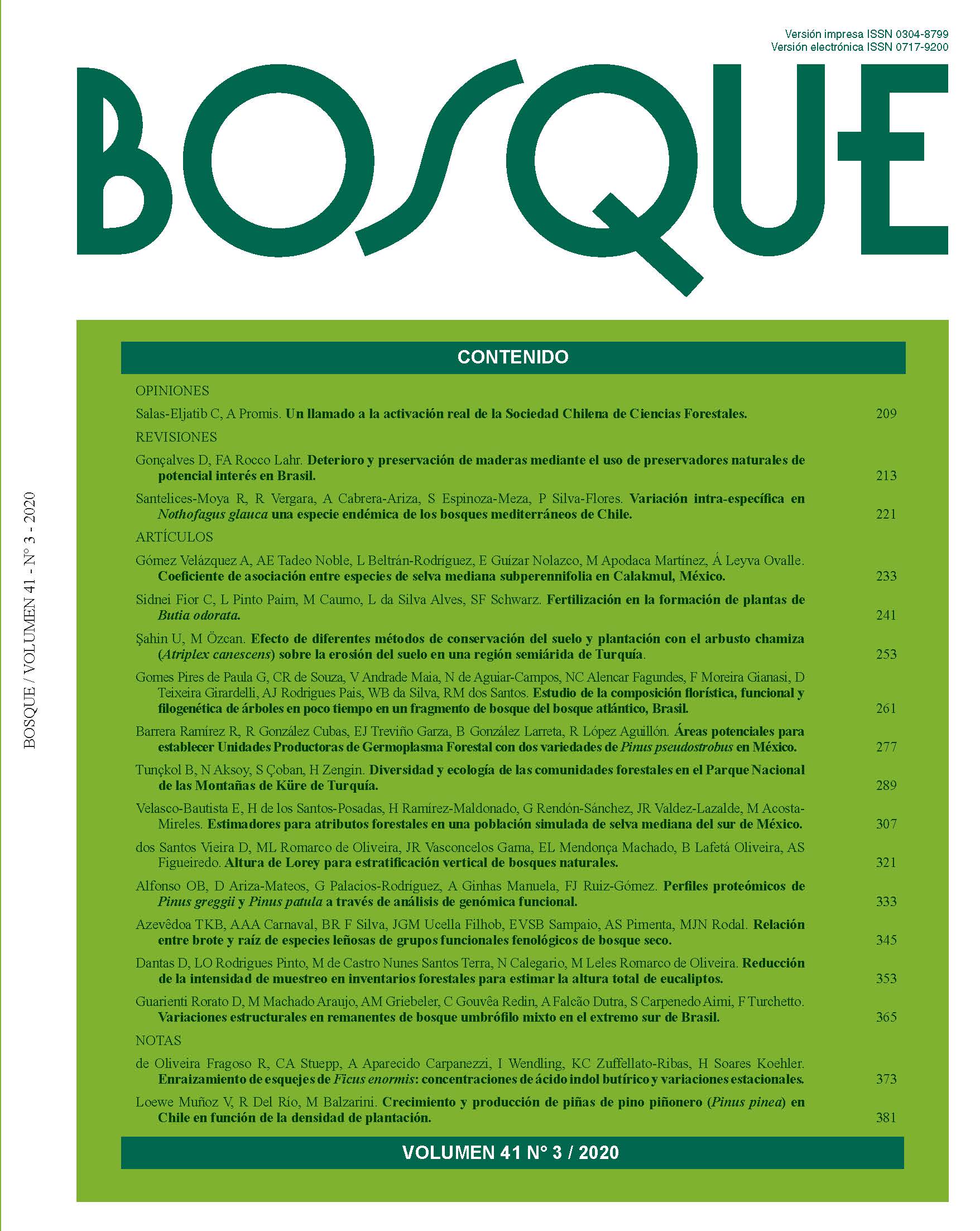Association coefficient between species of semi-evergreen forest in Calakmul, Mexico
Main Article Content
Abstract
Association coefficients measure interrelation level between the attributes of two species within populations. The objective of this work was to analyze the association patterns among the 10 species with the highest importance value index (IVI) in a semi-evergreen forest of Calakmul, Mexico. The 10 taxa were expected to be independently distributed within the community, therefore no interspecific association would occur. Systematically, 479 sampling units were established on a 500-ha surface in the ejido Gustavo Díaz Ordaz, Calakmul. Eighty-five tree species, 36 genera and 32 families were recorded. IVI was estimated, and with the 10 most important species, an χ2 analysis was performed to test independence in 45 possible combinations of species pairs. Cole's interspecific association coefficient was considered based on the χ2 significance test. The 10 most important species represent 47.98 % of the IVI. The Cole association coefficient identified that 17 pairs, out of 45, were distributed in a dependent way regarding another species, while the rest were indifferent to the presence of these taxa. Bursera simaruba, the species with the highest IVI, was related to three species, while Metopium brownei (third position of IVI) was related to six taxa. It is proposed to apply this procedure as an independent though complementary statistical test to Ripley's K12(t), to establish numerical criteria for the selection and analysis of spatial data.

